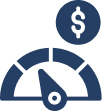Subtotal $0.00
Witness The Power Of Next-Generation Payment Infrastructure At Your Fingertip.
28is Oktovriou 125, Athina 112 51, Greece
Witness The Power Of Next-Generation Payment Infrastructure At Your Fingertip.
28is Oktovriou 125, Athina 112 51, Greece
Navigate the dynamic world of index trading with pipsvalue. Explore our diverse range of major global indices and harness the opportunity to trade across leading markets from the U.S. to Asia and Europe






Trading indices allows investors to speculate on the performance of entire stock markets or market segments without owning individual stocks. An index represents a composite value derived from a group of stocks, reflecting the overall performance of a market or sector. This form of trading is popular for its efficiency and the ability to gain exposure to a broad segment of the market through a single transaction.
One of the key benefits of trading indices is diversification, as it spreads risk across multiple stocks rather than focusing on individual company performances. Indices trading also offers enhanced exposure to broad market trends, providing a more balanced view of market movements. Additionally, it is a convenient way to gain insights into the economic health of a sector or a country.
In Indices trading, a financial leverage ratio of 1:100 means traders can control a position 100 times the value of their initial investment. This amplification can significantly increase profit potential but also escalates the risk, particularly in volatile markets.
Trading indices with leverage requires careful risk management due to the potential for rapid and significant price swings. High leverage can lead to substantial profits but also to equally significant losses. Traders should be well-versed in market analysis and use stop-loss orders and other strategies to mitigate risks.

The ICE USD Index measures the value of the U.S. dollar relative to a basket of six world currencies. It's widely used as a benchmark for the international value of the U.S. dollar and as an indicator of the international economic health of the US.

The FTSE 100 is a stock index representing 100 of the largest companies listed on the London Stock Exchange by market capitalization. It's seen as a gauge of prosperity for businesses regulated by UK company law and a leading indicator of the UK’s economic health.

The DJI, or 'The Dow,' is one of the oldest and most well-known stock indices, representing 30 large publicly-owned companies based in the United States. It's often used as a barometer for the overall performance of the U.S. stock market and economy.

The SP500 is a broader representation of the U.S. equity market, including 500 of the leading large-cap American companies. It's widely regarded as the best single gauge of large-cap U.S. equities and a key indicator of American economic health.

The DAX is a blue-chip stock market index consisting of 30 major German companies trading on the Frankfurt Stock Exchange. It's considered a benchmark for the German equity market and reflects the economic health of Germany.

The NIKKEI 225, also known as the Nikkei Stock Average, is a stock market index for the Tokyo Stock Exchange, featuring 225 top-rated companies in Japan. It's a primary indicator of the performance of Japanese equities and the Japanese economy.

The NASDAQ is heavily weighted towards information technology companies and includes over 3,000 stocks. It's known for its high concentration of tech stocks, making it a bellwether for the technology sector and growth-oriented stocks.

The CAC40 is the French stock market index tracking the 40 largest French stocks based on market capitalization on the Paris Bourse (stock exchange). It's considered a measure of the overall health and performance of the French stock market and economy.